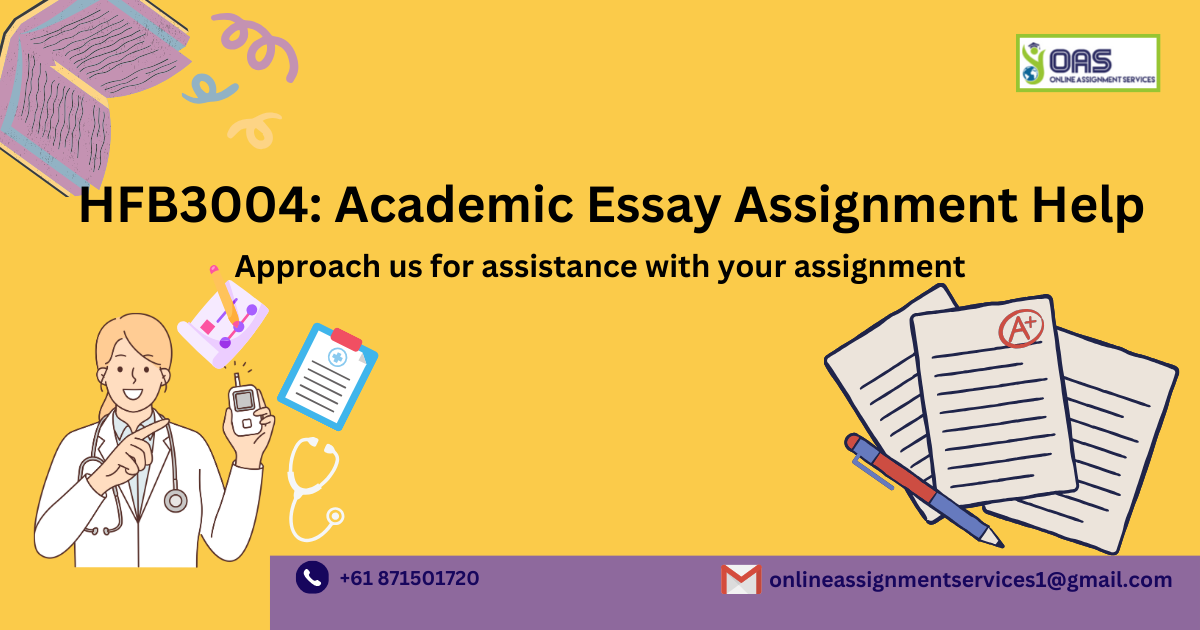HFB3004: Academic Essay Assignment Help

Question
HFB3004: In this academic assignment, students are required to write a 1500 word essay analysing the biopsychosocial differential diagnoses in the given case study. A literature review should be undertaken to incorporate a clear definition of PTSD and C-PTSD, elaborate on the impact of trauma on the nervous system, highlight the different responses of trauma, and delve into the connection between the symptoms and the patient’s C-PTSD diagnosis. Additionally, risk factors and symptoms relating to the case study need to be outlined while also discussing the potential biases. Through this information, the student is required to make the patient’s care plan.
Solution
The first section of the assignment is a short introduction for the essay. Keep on reading to see how our experts provide brief and appropriate introductions.
Introduction
This essay aims to discuss Post Traumatic Stress Disorder (PTSD) and Complex- Trauma (CPTSD) through the case study of a 24-year-old female. It further discusses the pathological effects of C-PTSD. The essay highlights the potential relation between a patient’s symptoms and C-PTSD and further evaluates the possibility of Pulmonary Embolism (PE) in this patient.
This is just half of the introduction. If you wish to read more, please call us at +61871501720.
Our experts provide a structured solution to the various requirements of the essay. These include specific answers to eight questions. Responses to these questions have been sequentially presented below:
The first question in the case study is to clearly define the understanding of PTSD and C-PTSD. This was explained thoroughly by our experts.
PTSD is defined as a psychological disorder seen in some persons after experiencing a startling, terrifying, or deadly event (Heim et al, 2022). While the majority of traumatised individuals, though not all, have transient symptoms, some go on to acquire chronic PTSD.
This is only 50% of the definition provided by our experts. Wish to read more? Please feel to reach out to us at onlineassignmentservices1@gmail.com.
While answering the second question, the experts explore the impact of trauma on the hippocampus, cortisol levels, the amygdala, the sympathetic and parasympathetic nervous systems.
The effects of PTSD and C-PTSD are seen on the sympathetic (SNS) and parasympathetic nervous system (PSNS), via the amygdala, hippocampus, and prefrontal cortex which regulate the stress response (Dekel et al., 2017).
If you wish to read more about the impact of trauma, don’t hesitate to WhatsApp us at +447700174710.
Read on for how our experts elaborately explain the different trauma-related responses including fight, flight, fawn, freeze, and flop reactions in the third question.
All animals are endowed with the ability to respond to danger with an innate automatic defence cascade that includes fight, flight, fawn, and flop responses (Kozlowska et al., 2015).The flight trauma reaction entails escaping the danger or threat.
Need all four responses written by our experts? Please WhatsApp us at +447956859420.
The subsequent section answers the fourth question and explores the potential connection between the symptoms and the C-PTSD diagnosis of this patient. Keep reading to know how our experts portray this relationship.
In the case study described above, the woman is a known to have C-PTSD, as evident through her past history. She is a victim of racial discrimination and harassment at work place and is also socially bereaved. This point in her history can be considered a source of trauma that is crucial for the diagnosis of C-PTSD (Bryant et al., 2023). At the time the patient developed symptoms of anxiety, shortness of breath, light headedness and chest discomfort she was in a meeting with her colleagues which possibly triggered her symptoms.
This is only half of the relationship between symptoms and diagnosis written by our experts. Don’t hesitate to call us now at +61871501720.

The solution in the fifth question discusses the risk factors and symptoms that accompany pulmonary embolisms. Our experts emphasise the connection between this data and the case study.
PE results when venous emboli become lodged inside the lung vasculature. It usually associated with Deep Vein Thrombosis, the deep veins in the legs being the source of wandering thrombi (Morici, 2014).
Wish to read the remaining risk factors and symptoms highlighted by our experts? WhatsApp us at +447700174710.
Next, the essay required an explanation about the biases that might occur in the patient’s case. Our experts explain the cognitive biases that would put this patient at risk of receiving an inadequate triage or might lead to ignorance in the severity of their clinical case.
Even in the absence of the aforesaid risk factors, the patient qualifies for detailed assessment because of the ominous combination of chest pain with history of fainting. In the 4 absence of such an assessment, the patient is at risk of being under-triaged due to cognitive bias, a common error in medical practice.
This constitutes only half of the description of the biases written by our experts, which you can read more about by reaching out to us at onlineassignmentservices1@gmail.com.
The seventh question in the solution have been answered clearly by our experts. It highlights the identification of one of the two differential diagnosis discussed which should be used as the starting diagnosis until conclusive tests are obtained, and the rationale behind this choice.
From the above discussion, the patient described in the case study is clearly under the risk of being managed inappropriately owing to the cognitive biases that may affect the quality and gravity of medical care she receives if at all she is under an acute PE.
We have given only 50% of the diagnosis. Please reach out to get insights about the complete section at +61871501720.
The last part of the discussion requires the provision of a brief biopsychosocial care plan according to the patient’s case study. Our experts have curated this section in accordance with the work environment and provided a comprehensive care plan.
In keeping the principles of emergency management, the patient must be immediately investigated for PE using Computerised Tomography Pulmonary Angiography (CTPA) and D- dimer testing (Morici, 2014). If the patient is confirmed to have PE, timely referral and appropriate medication for thrombolysis and anti-coagulant therapy must be initiated to stabilize patient (Howard, 2019). In case, all tests refute the diagnosis of PE and other cardiopulmonary diseases, the patient must be managed with a biopsychosocial model for C-PTSD.
Need the complete care plan? Drop a WhatsApp text at +447700174710.
Conclusion
The solution also demands a conclusion for the assignment. Please read how our experts have articulated a brief conclusion to the essay below.
This essay discusses the case of a 24-year-old woman who presents with symptoms of shortness of breath, chest discomfort and history of syncope to a primary health set-up.
We have provided only 50% of the conclusion. To read the complete conclusion, please WhatsApp us at +44 7956859420.

